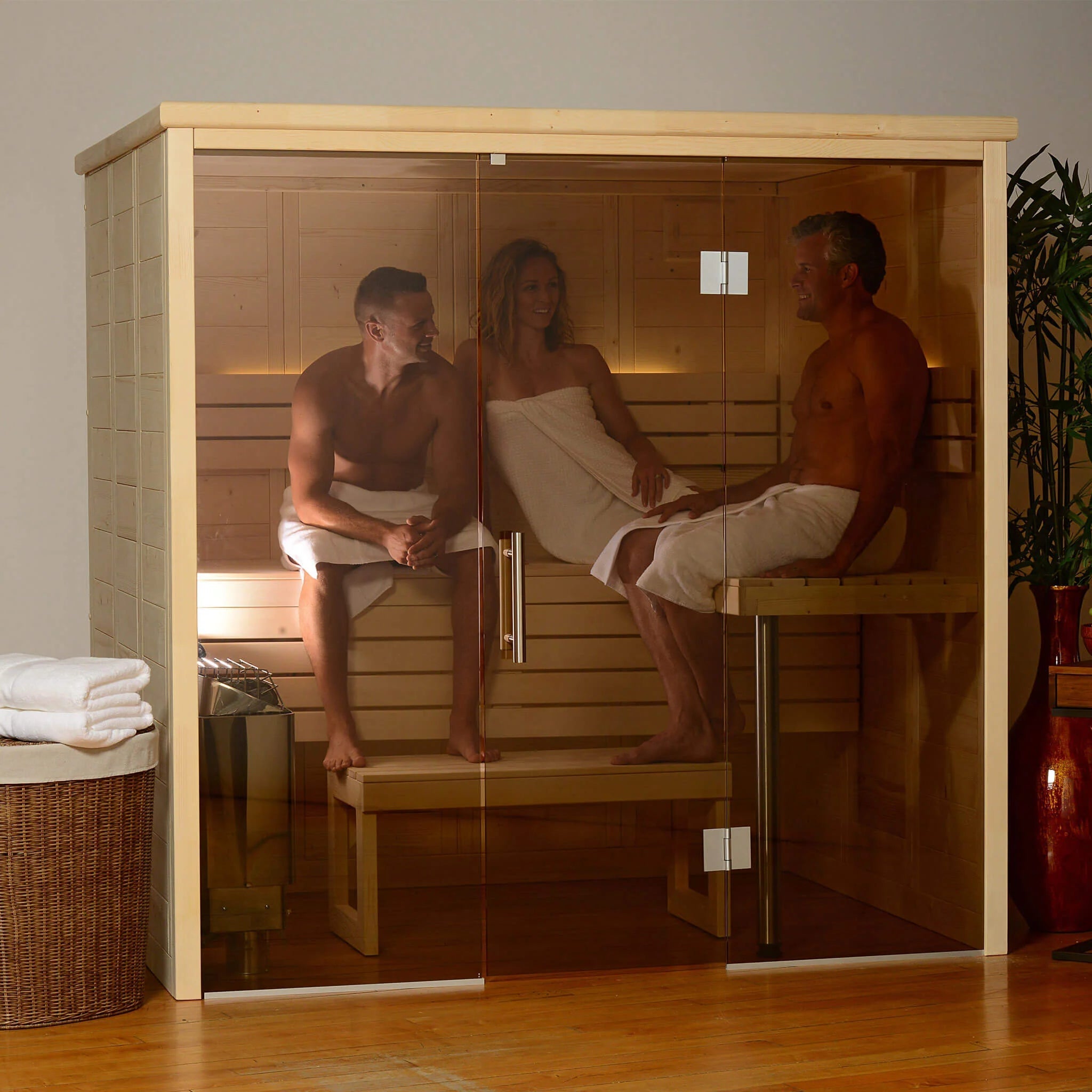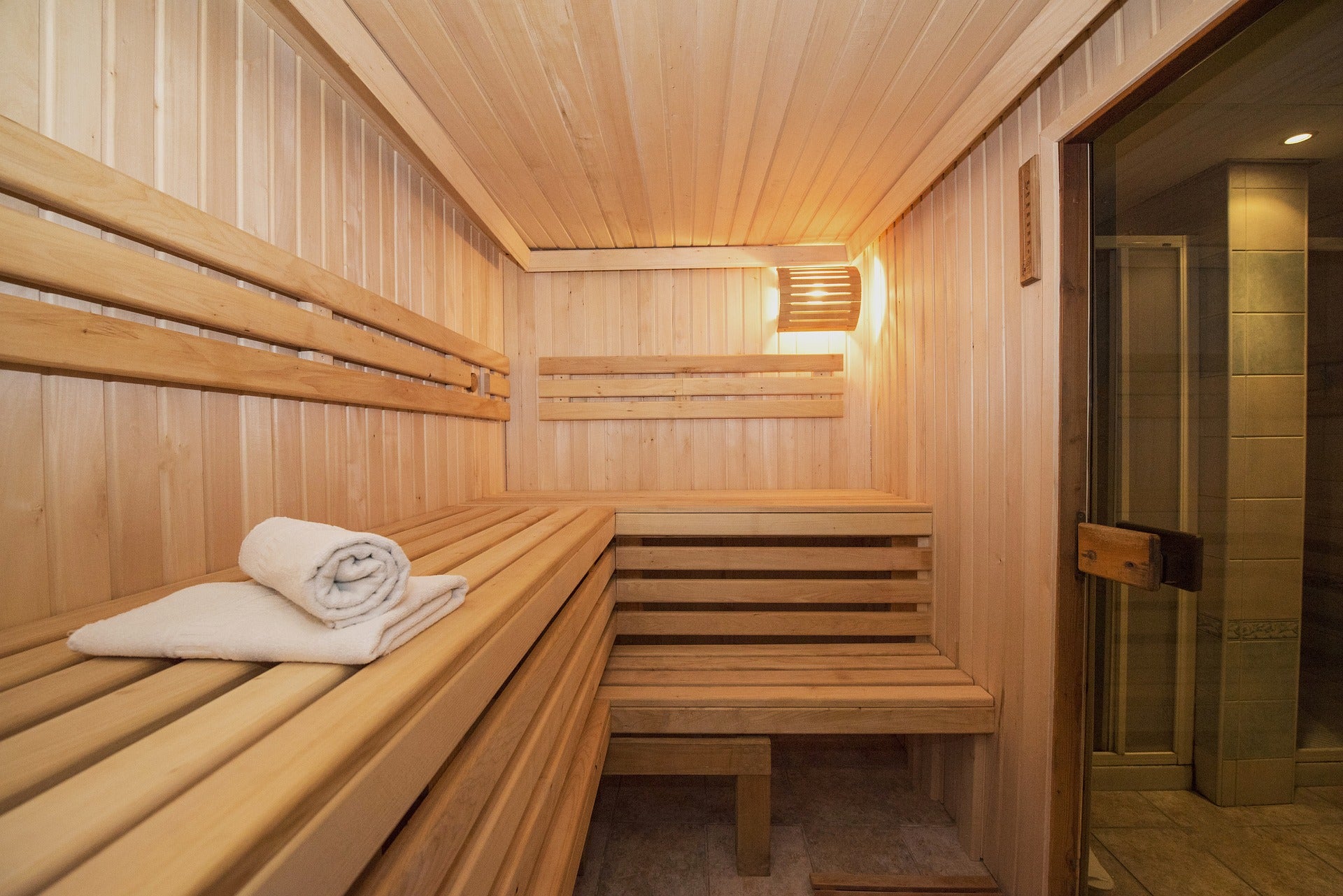The Ultimate Guide To Traditional Sauna
The Ultimate Guide To Traditional Sauna
Blog Article
Traditional Sauna Fundamentals Explained
Table of ContentsSome Ideas on Traditional Sauna You Should KnowFacts About Traditional Sauna UncoveredThe Basic Principles Of Traditional Sauna The 9-Minute Rule for Traditional SaunaLittle Known Questions About Traditional Sauna.
The majority of the weight lost in a sauna is water loss and is re-gained upon rehydrating. Without an uncertainty sauna can be a crucial part of a healthy weight loss program. To check out the distinctions between traditional and IR saunas, I will certainly divide these into proven, theoretical, and produced differences.Therefore, the most popular factor in the saunawhich goes to the ceiling straight over the sauna heateris usually between 185 and 190 F. Claims that a conventional sauna exceeds 200 F is merely not real and not relevant for electric saunas sold in the US. The temperature level for a far-infrared sauna is usually set in between 120 and 140 F; nonetheless, unlike the standard sauna, the objective in and IR space is not to accomplish a heat.

When a conventional sauna has been properly heated up, the sauna wall surfaces are warm, the air temperature level has achieved set temperature and the rocks are extremely heated. As an interesting side note, the warmed wall surfaces and the rocks are sending out far-infrared warm, combined with the warmed air, to produce an "wrapping up warm".
Some Known Incorrect Statements About Traditional Sauna
When the heat is attained, the elements cycle on and off to maintain the high temperature. Most traditional sauna individuals enjoy pouring water over the rocks to produce vapor to raise sauna moisture levels. The benefits of putting water over the rocks consist of: making the area much more comfy, dampening the nasal flows, and permitting the use of aromatherapy by mixing necessary oils with the water.

When the power gets in the body, it creates the body temperature to increase and ultimately results in sweat. In an infrared sauna it's vital for the emitters/heaters to remain on almost constantly. Since there is no mass of rocks to keep warmth, the sauna will certainly cool if the emitters shut down.
The 6-Second Trick For Traditional Sauna
As mentioned over, the sauna bather in an infrared space wishes see here to place himself in front of operating emitters to get optimal take advantage of the warmth. The heating time for the 2 spaces can be very various, depending upon just how the spaces are used. For a typical sauna, a bather must enable 30-40 mins for the room to accomplish a desired temperature level and to properly pre-heat the rocks.

A well created sauna will normally attain a temperature of 150-160 F in regarding 30-40 mins. For hotter temperature levels, the room may need to warmth for a longer duration.
To some, 15 mins was "thrown away" while the infrared power warmed the timber click here now panels instead of heating a body, while others locate a pre-heated space to be more comfy and believe an elevated starting temperature level is necessary to start perspiring. The length of advised use for each area is approximately the exact same (10-15 mins per session); nevertheless, because of the reduced air temperatures and the capability to really feel the effects of infrared heat much faster than a standard sauna, it is not unusual for a person to spend an overall of 20-30 minutes in an infrared sauna.
What Does Traditional Sauna Do?

The ordinary expense per kWH of electricity in the U.S. is around $0.11, so a 4.5 kW heating unit will cost roughly $.50 to run for one find hour, if the heater runs continually for one hour. Generally a sauna heater will certainly run for 75% of the first hour and 50% of subsequent hours on given that the components cycle once the established temperature is accomplished.
A two individual far-infrared space is normally physically smaller sized than a traditional sauna, commonly concerning 4' x 4' or smaller sized. The IR furnace is usually 1.5-1.7 kW using a 120 volt 15 amp plug-in solution. Given that the room can be utilized earlier than a sauna space, we will certainly presume the space is made use of for to of an hour consisting of warmth up time.
There is a rarely gone over difference in the social experience in between the two rooms. While our society has lost a few of the social advantage of the standard sauna experience, it can be really socially gratifying (Traditional Sauna). From household time in the sauna, to heart-felt conversations with loved ones, to sauna partiesthe conventional sauna experience can lead to intimate mingling
Rumored Buzz on Traditional Sauna
A lot of greater end infrared rooms include colored light treatment, noise systems and full-glass fronts.
Report this page